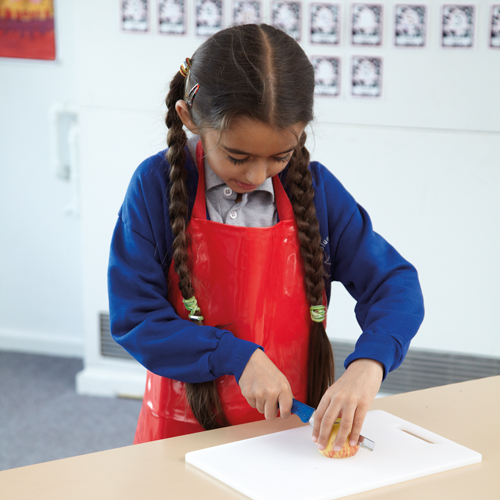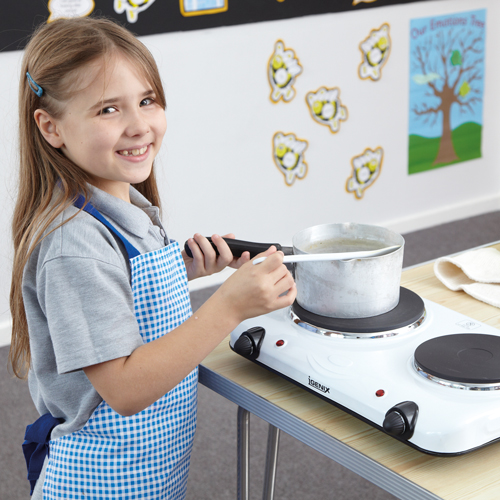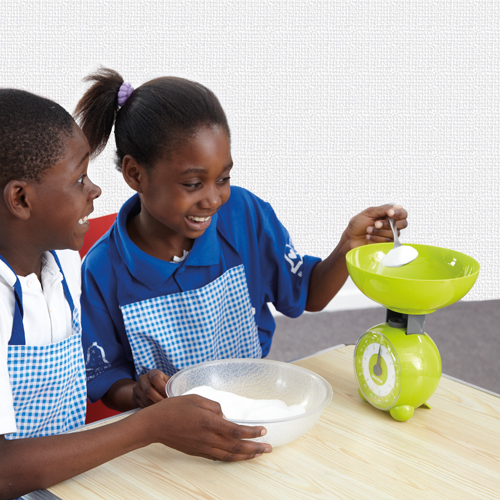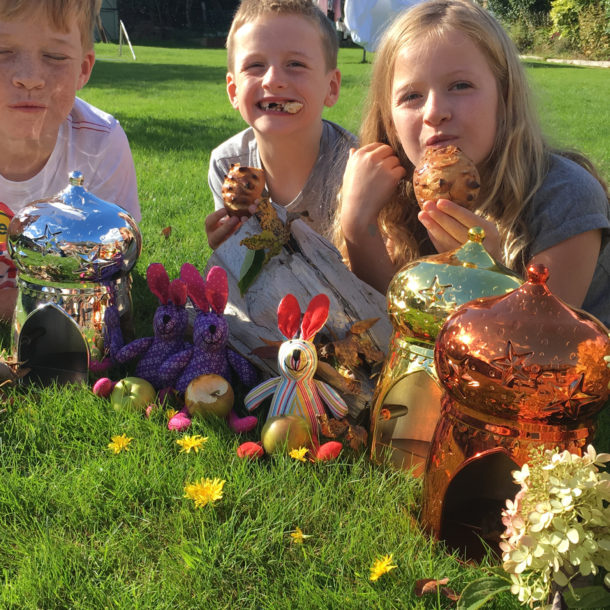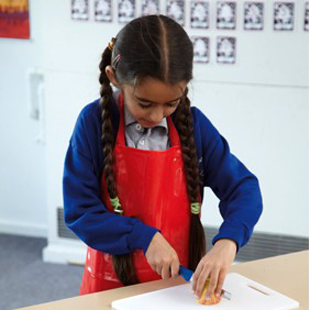Not sure how to deal with sharp equipment in your classroom?
Many primary school teachers, especially those new to cooking find the prospect of allowing their pupils to use sharp equipment very daunting. However if pupils are always supervised and aware of the dangers of some equipment this should be less of an issue. Introduce safe cutting practice using soft foods and table knives with younger children and gradually introduce sharp knives and firmer food as skills progress.
Tip: Always store sharps in a separate lidded box. These can then be stored well out of reach or locked away.
Tip: Replace all sharps frequently as a blunt piece of equipment can be much more dangerous than a sharp one.
How can you stop cutting mats slipping?
After reading a range of hints and tips around “bridge technique” and how to introduce sharp utensils to your classroom, you’ve found more confidence when cooking with your pupils only to find the cutting mats being used keep slipping.
Tip: Why not damp a piece of paper towel and place between the cutting mat and the table? This will prevent the mat from slipping when cutting your ingredients and remove the danger. (And you can use it for a first wipe when clearing up too!)
Can your KS2 class use hobs safely?
Using a heat source in cooking at KS2 is a key skill of the national curriculum. Where it can go wrong is if the hob is placed out of reach or at an inappropriate height for the child.
Tip: Adjustable height tables are ideal when using hobs as they can then be changed from normal classroom sitting level up to cooking use quickly or adjusted according to the age and height of the child.
Do you have limited space to cook in your classroom?
Many primary schools do not have a dedicated area for cooking and nutrition which can be a challenge when trying to meet the aims of the national curriculum. Cooking trolleys can be a great space saver and many can be used to both cook from and store equipment when not in use.
Tip: Where possible place cooking trolleys against the wall to prevent prying fingers reaching to the back of the oven. Hobs and other electrical equipment are also better placed against a wall (preventing hob flex etc).
Have you lost some of your equipment after a cooking lesson is over?
The counting in and out of equipment is essential, especially in the case of sharp equipment that could become a potential danger when taken outside of your classroom.
Tip: Coloured or labelled equipment can clearly set out a working area, encouraging group work but is also much easier to count in and out of storage.
Featured tips come from Kate Morris and Sally Brown, Children’s Cooking Consultants. http://www.sallybrownkatemorris.co.uk/

